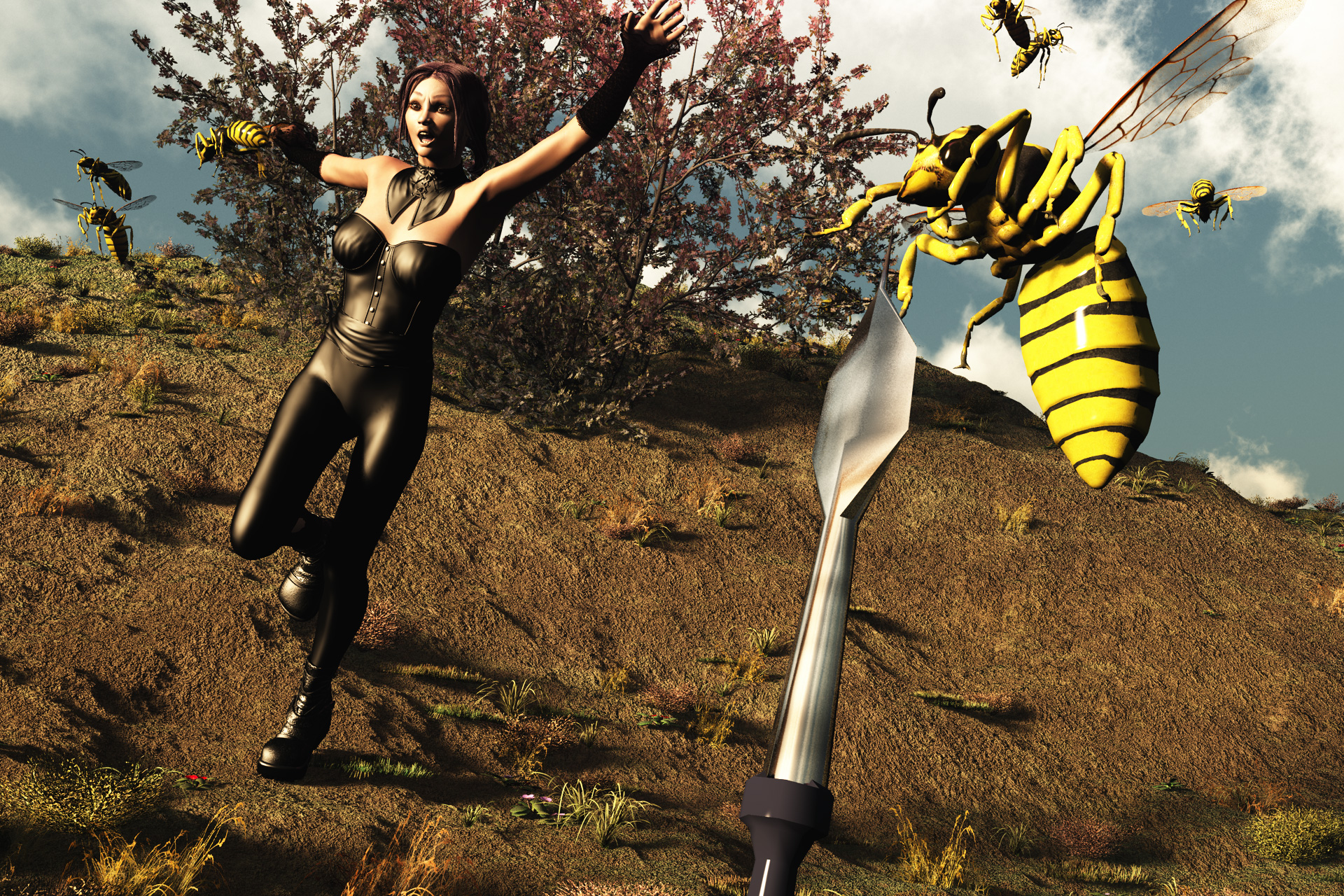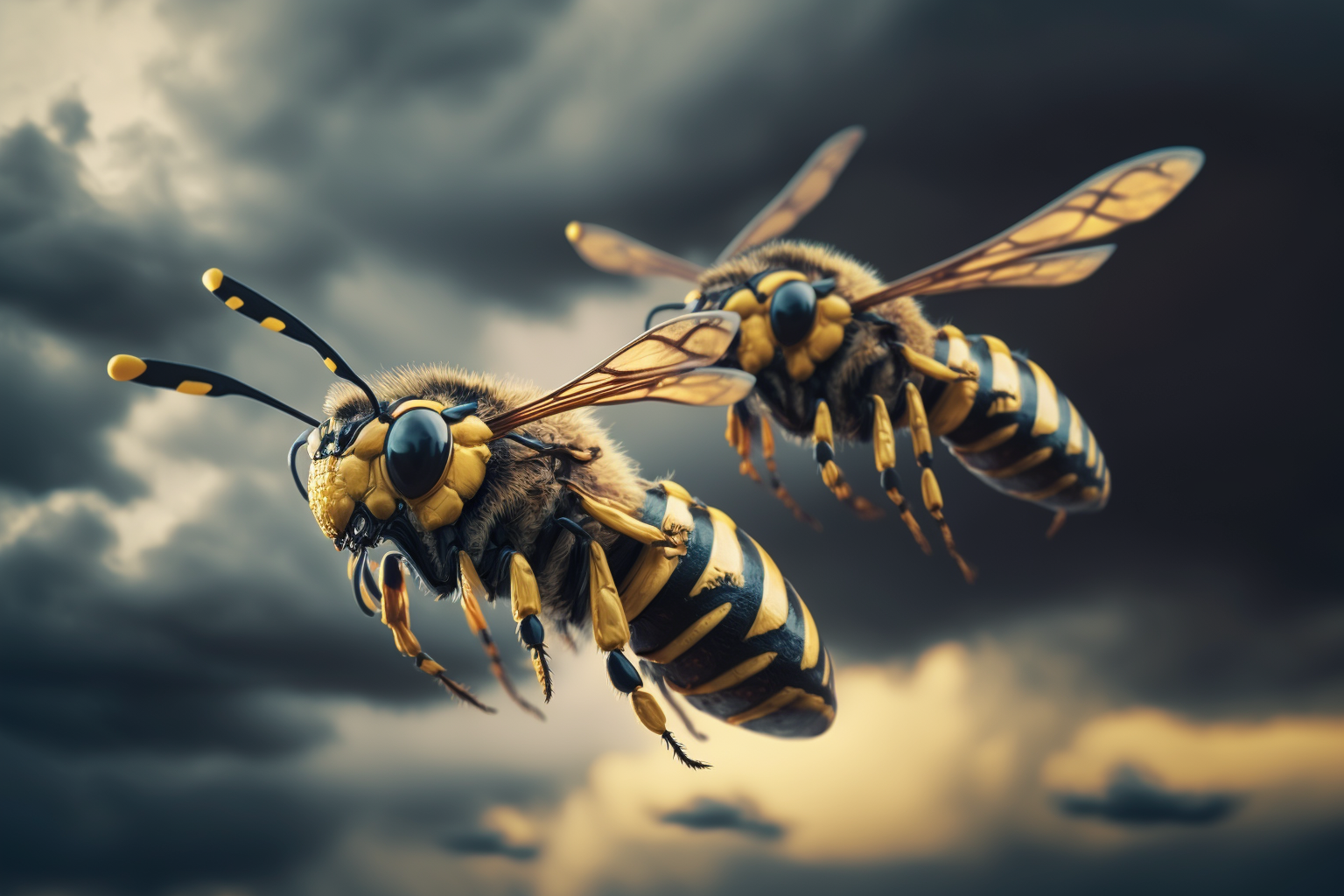Neowasps
Neowasps are members of the Gene Sea on the World of the Long Sleep.
Basic Information
Anatomy
Neowasps are a gigantic alien pseudo-insect, closely resembling in their morphology and habits the common earthly wasp, although they are not true insects and some of their internal anatomical features are closer to that of birds. They share, with earthly wasps, an ability to deliver a dangerous poison with a powerful sting which is extremely painful.
Genetics and Reproduction
A neowasp nest will generally enter a dormant, torpid state in the winter months. Eggs are laid at the end of autumn after the last fruit has fallen and then most individuals return to the nest and die. A few chosen defenders are kept alive by feeding on the bodies of the others. These individuals, known as the nursery or guardian neowasps, will mostly sleep through the winter in a kind of semi-hibernation but they will wake to defend the eggs from any threat. In spring, the young hatch and begin to forage, feeding on sap and the young of other small prey species with the help of the older individuals who have made it through the winter. The cycle repeats again and if a nest has a successful summer, it may split to form two colonies.
The image below shows an egg chamber cell as winter approaches, with the eggs waiting until spring to hatch. A nursery adult will spend most of the winter in a torpid state but can become aroused if the nest if threatened. Stores of food are held in the cell, shown here in a packaged cocoon, which are sufficient for the low metabolism rates of the sentries and will feed the young when they hatch until they can forage for the first food of spring.
Growth Rate & Stages
Neowasps hatch from their eggs as small versions of the adult form. There is no intermediate larval stage. The chicks will begin their life feeding on stores laid down over the winter but they grow rapidly and are soon capable of foraging, feeding on tree sap, chewing young leaves and eating meat brought in by the nursery adults, until they are ready to hunt bigger game in the summer.
Dietary Needs and Habits
Neowasps live in nests which may contain between one and five hundred individuals. Their nests cannot grow much larger than this since the local ecosystem would be unable to sustain the population. They are omnivorous, feeding on fruit of many kinds and carrion and they will also on occasion attack large and small creatures who come within range, sometimes stinging them to death and feasting on the carcass. Fortunately for travellers and other wildlife they are unable to conduct attacks like this often since they need to build up sufficient resevoirs of poison, which takes time to synthesise. They also always maintain some level of chemical reserves for defensive purposes in case the nest should be attacked. On Earth, they have no predators who would choose to attack a neowasp nest but they retain this evolutionary trait from their homeworld.
Behaviour
Neowasps are generally harmless since they usually prefer to feed on fruit, but they can be dangerous if they have built up sufficient poison in their stinging organ to conduct a hunting attack. In this state they are capable of killing animals many times their size. They will also defend their nests very agressively and it is a bad idea to disturb them unless you are prepared for the consequences.


Great Burning : 46 by DMFW with Vue
Additional Information
Geographic Origin and Distribution
Average Intelligence
Neowasps have very simple brains, capable only of executing basic instinctive biological behaviors.
Lifespan
Spring until Autumn, but the Nursery or Guardian Neowasps will live to the following summer.
Average Height
5 cm
Average Weight
200 grammes
Average Length
22 cm
Body Tint, Colouring and Marking
There are a number of different sub-species of neowasp, differentiated by their colouring, which varies between a bright, almost plastic yellow, through to a yellowish orange and even a rare crimson red variety.



Comments